Different Types of Loft Insulation – Different Installation Methods
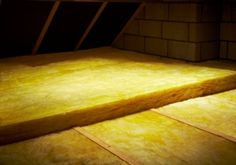
Learn about Loft Insulation Installation
We have talked several times about the importance of proper insulation, including loft insulation, so now it’s time to move on to some more practical issues. Namely, the first step that includes learning about different types of insulation available and choosing the most adequate one should always be followed by proper insulation. Although all the issues can be resolved in simply engaging a professional contractor that should have all the relevant information, why not take everything a step further and learn a thing or to yourself and maybe try to install insulation yourself. This will require not only information on the preparation and installation process, since different types of loft insulation require different installation method, but also some basics on which type of insulation material can be installed with no professional assistance and which ones, like it or not, must be installed by a professional. If these few lines got you interested, just read the following carefully.
First of all, you should know that installing loft insulation is equally important during both winter and summer time. Namely, although people usually tend to connect insulation with cold winter months and think of it only when preparing for the winter, you should know that insulation usually serves both purposes – as the barrier from both heat and cold. This is in particular applicable to loft spaces, since these are under the direct influence of the weather. This means that insulation will not only allow the loft space to be turned into storage or even a living space but it will also protect the entire house from the steaming sun rays during the summer. For more information on types and advantages of loft insulation, please refer to this article.
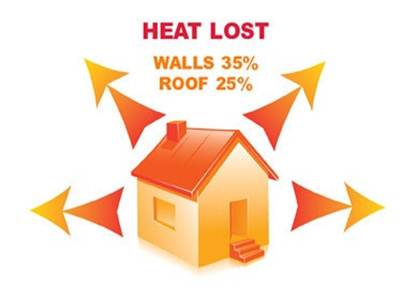
Now, it is time to move on to more practical issues. If you have chosen the type of insulation, you will need to know how to properly installed, so here are a few useful tips. However, before starting your insulation project, you need to take some preparatory actions, in order of making sure that the loft is safe and ready for insulation. This includes the following:
- the first thing you need to do is clear your loft space which includes removing any things that you have previously stored within your loft space. Note that you need to create a clan path for the insulation but also make sure that the loft space is secured. This may involve adding a board or two that will ensure safe steps for the installer.
- another important thing is the wiring. Namely, since wires tend to go through the loft space, you will need to hire an electrician that will inspect the wiring and re-route it if necessary. Anyway, you (or the professional installed you have engaged) will need to make sure that the wiring goes above the insulation, since you don’t want to risk covering the wires and risking a fire, in case the wires get overheated.
- finally, you will need to take care of the water tanks and pipes, prior to installing loft insulation. You will notice that these can and should also be insulated, since this will both stop the pipes and tanks from freezing and also stop the pipes and tanks from emitting heat.
Loft Insulation Installation Tips
Once you have taken all the upper mentioned precaution tips, it is time to move on to the installation process, which will depend on the insulation material you have chosen. We shall consider some basic loft insulation materials that are most commonly used, so please take the following advice when commencing the installation process:
Sheet insulation
Sheet insulation usually found in rigid insulation boards is your best option, if you are planning on converting your loft space into a living space (or using it as such), since this will not completely separate the loft from the rest of the interior, but allow some heat exchange, which will not be the case if you decide to insulate the loft floor. The insulation boards are usually installed between the roof rafters, with enough space left between the roof slates and the insulation material, for proper ventilation which is essential in condensation and mold prevention. Also, please note that insulation should be added only if the roof is in good shape, since if the slates or tiles are anyhow damaged, these should replaced or repaired prior to adding loft insulation.
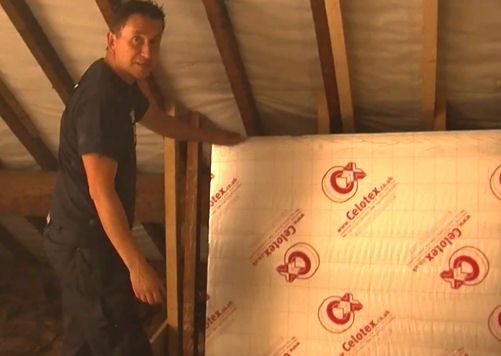
Blanket insulation
Blanket insulation is among the most commonly used insulation materials since it is very easy to install and it is basically a DIY job, which can drastically lower your loft insulation budget. All you need to do is carefully read the given manufacturing instructions and make sure to achieve the recommended level of insulation (270mm) by either adding two layers of insulation on top of one another or by upgrading the existing insulation. The insulation material is usually packed into rolls so it is easily rolled down the between the joists, making sure that it is not pressed or otherwise damaged. If it needs to be trimmed to the right size, make sure to use scissors or a utility knife, and not to stretch the material since this can jeopardize its basic insulation functions. The most commonly used insulation material is mineral, glass or natural sheep wool insulation.
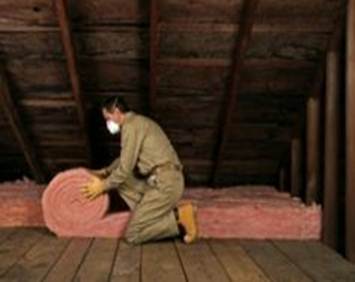
Blown insulation
Another type of loft insulation you can use is blown insulation (usually consisting of some type of fibre insulation) which however requires professional help. It is inserted into the loft space with specialist blowing equipment and is probably the best solution if you are dealing with some hardly accessible space or obstructions that prevent alternative insulation materials to be installed.
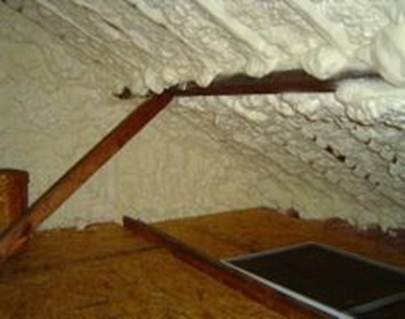
Loose-fill insulation
Finally, another popular type of loft insulation is loose-fill insulation. It consists of different light materials such as cork or even old newspaper and it is usually poured between the loft joists to the required depth. It is another DIY job, so what you need to take care of is that you have the adequate amount of the material that is poured between the joists. If you are planning on achieving a depth of 200m, you will need approximately 200 litres per each m2. Prior to adding loose-fill loft insulation, make sure that the loft space has been properly cleared and that there are no cracks in the ceiling below, thus making sure that the loft floor will be able to withstand the imposed load of insulation.
Take a look at the loft insulation products on offer at our shop and buy insulation online without any fuss. If you need more information or advice feel free to send us your questions at info@insulationshop.co.


















































































































